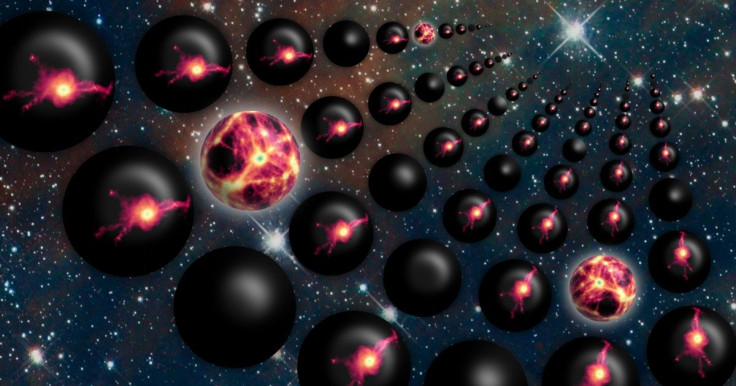Multiverse’s High Dark Energy Levels Don’t Hamper Life’s Chance Of Existing Elsewhere

The multiverse is a cosmological idea according to which the universe we are in is only one of several universes, one in which the amount of dark energy — that mysterious force that accounts for over 68 percent of the total energy in the observable universe and causes its accelerating expansion — is unexpectedly low. The amount of dark energy, lower than predicted by theories of the origin of the universe, is also held up as a factor that allows life to exist in our universe, but not in the rest of the multiverse.
Our universe is thought to be a lucky one, because had there been more dark energy, the universe would have expanded much faster than it did/does, and matter would have been too diluted to come together to form stars and planets. In such a scenario, life as we know it would not have formed, and the universe would be, in that sense, dead, like the rest of the multiverse which has the theoretically higher amount of dark energy.
But a new simulation of the cosmos shows even dark energy levels hundreds of times higher than observed in our universe would not impede the formation of stars and planets. Therefore, several other universes in the multiverse could possibly also be home to life forms.
Jaime Salcido, a postgraduate student at Durham University’s Institute for Computational Cosmology in the United Kingdom, and lead author of a research paper on the subject, said in a statement Sunday: “For many physicists, the unexplained but seemingly special amount of dark energy in our universe is a frustrating puzzle. Our simulations show that even if there was much more dark energy or even very little in the universe then it would only have a minimal effect on star and planet formation, raising the prospect that life could exist throughout the multiverse.”
Other than raising the possibility of life existing elsewhere beyond the universe, there is another impact the simulation’s results have — on the multiverse theory itself, which scientists like the late Stephen Hawking subscribed to. Since the theory was formulated partially to explain the seeming anomaly between the theoretical and observed amounts of dark energy in the universe, in relation to the formation of stellar and planetary bodies, it now seems to have lost its main reason to exist.
“The multiverse was previously thought to explain the observed value of dark energy as a lottery — we have a lucky ticket and live in the universe that forms beautiful galaxies which permit life as we know it. Our work shows that our ticket seems a little too lucky, so to speak. It’s more special than it needs to be for life. This is a problem for the multiverse; a puzzle remains,” Luke Barnes, a research fellow at Western Sydney University, Australia, and coauthor of the paper, said in the statement.
The simulation doesn’t rule out the multiverse theory, but suggests that an as-yet unknown law of physics could better explain the amount of dark energy observed in our universe.
Two research papers based on the simulation’s findings are set to be published in the journal Monthly Notices of the Royal Astronomical Society.
© Copyright IBTimes 2024. All rights reserved.











